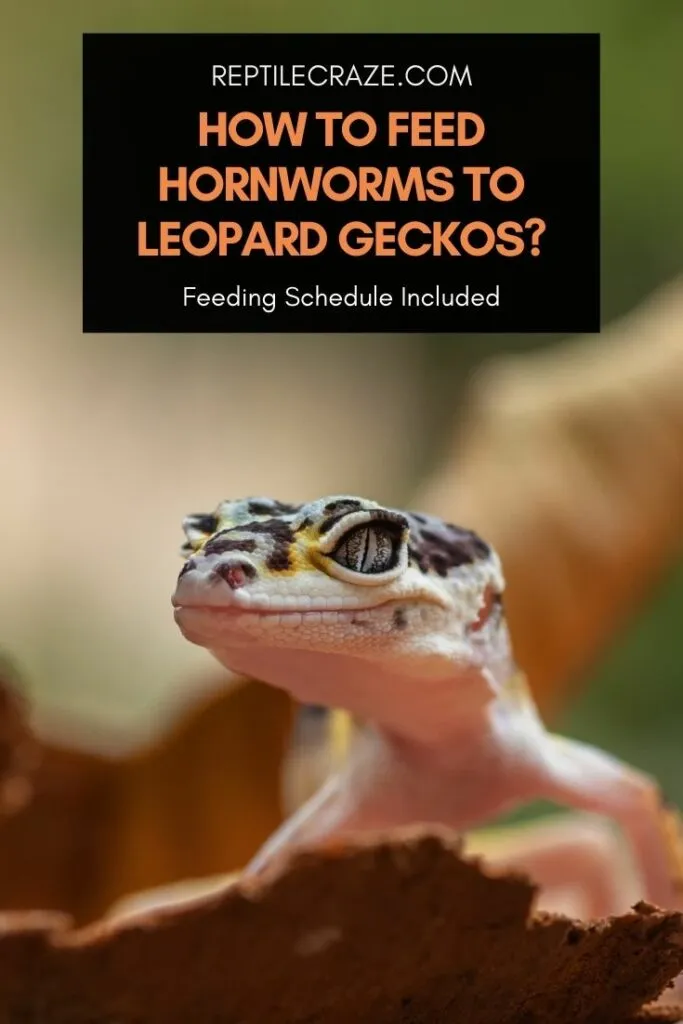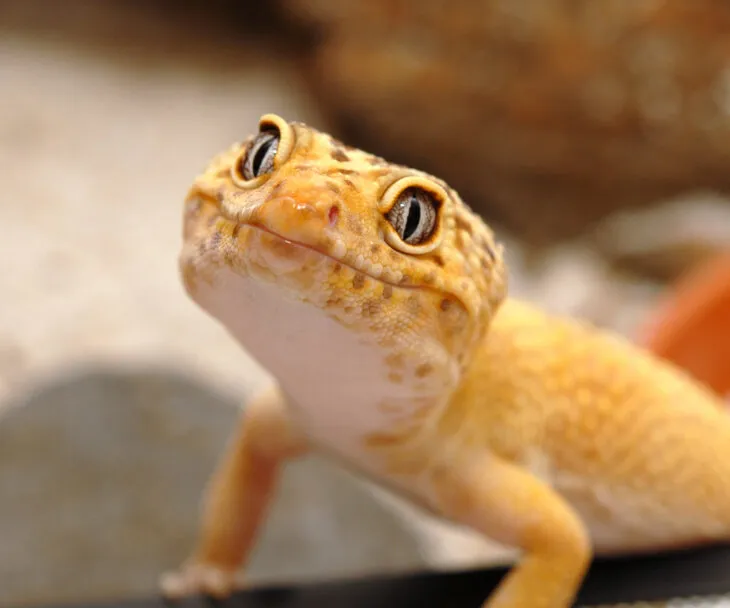
Feeding Leopard Geckos is typically effortless. It is enough to offer the necessary amount of insects in a limited period and let them go hunting. Adding caterpillars is an excellent way to provide required calcium to lizards’ daily diet, but many owners are unsure how to feed hornworms to Leopard Geckos.
The best option is to offer one to four hornworms to your Leopard Gecko, depending on its age, but no more than three to four times a month. The problem is that lizards consider these caterpillars as treats, can become addicted, and sometimes start refusing other
If you want to know how often you can feed your leopard gecko hornworms, how to incorporate them into your feeding schedule, and how to prepare these worms for your leo, keep reading!
Table of Contents
How Many Hornworms to Feed My Leopard Gecko?
The rule of thumb is to avoid overfeeding your Leopard Gecko and prevent regurgitating and gaining weight. Therefore, the amount of
| Day | Meal example for an adult |
| Monday | Large crickets (4 to 5) + mealworms (1 to 2) |
| Wednesday | Dubia roaches (5 to 6 medium or 7 to 8 small) |
| Friday | Large crickets (3 to 4) + mealworms (2) + hornworm (1) |
Adults can enjoy in one big, two to three medium-sized, or three to four small hornworms once a week.
Never offer your juvenile Geckos a big hornworm to prevent choking (more on that here). However, you can feed it with one medium-sized or one to three small hornworms two times a week.
Finally, a baby Leopard Geckos shouldn’t eat more than a small hornworm a week.
| Day | Meal example for a baby leopard gecko | Number |
| Monday | Small crickets | 5 to 7 |
| Tuesday | Small dubia roaches | 6 to 8 |
| Wednesday | Small crickets + Small roaches | 3 to 4 each |
| Thursday | Small crickets | 5 to 7 |
| Friday | Small roaches | 6 to 8 |
| Saturday | Small crickets + roaches | 3 to 4 each |
| Sunday | Small crickets | 3 to 4 |
| Sunday treat | Small hornworm or waxworm | 1 |
Be aware that each Leopard Gecko has a different taste and preferences. So, you can expect that these recommended guidelines won’t fit every lizard equally.
Most Geckos adore hornworms and can eat all of them, no matter how much you offer them. On the other hand, some picky eaters won’t even touch these caterpillars even as an occasional treat.
If your Gecko refuses to eat this
How Often Can Leopard Geckos Eat Hornworms?
The problem with hornworms is that they are too delicious for Leopard Geckos. Offering this treat to your pet too often can make it addicted over time.
In extreme cases, the lizard can refuse to eat anything else if you stop providing these caterpillars, causing severe health issues.
The only option you have in that case is to stop feeding your pet for a while until it starts eating a nutritionally complete diet.
Your goal is to prevent unhealthy feeding habits and addiction and offer hornworms only once a week. Some owners even recommend giving this
There is one more thing. Hornworms are pricey, and you should be careful with offering them to your pet when you have a limited budget.
Ways to Feed Hornworms to Your Leopard Gecko
Hornworms are practical to feed Leopard Geckos since they move slowly, making it comfortable and effortless for your lizard to catch them. Plus, they are moist, which makes swallowing easy.
However, these caterpillars are not ideally balanced
Gut loading
Hornworms are yummy and easily digestible bites for your Gecko, but they lack some nutrients, particularly proteins. Therefore, you need to gut-load them before offering them as a meal.
Gut loading is a way to raise your Leopard Gecko’s prey quality by feeding it with nutritious foods. The goal is to pass those nutrients to your lizard indirectly. In this case, you should use this method to enrich hornworms with missing proteins.
The ideal period for gut-loading hornworms is 12 to 48 hours before putting them on the menu. Unfortunately, these creatures are suckers for sweets, so gut-loading them is not an acceptable option in the long run.
In most cases, live hornworms bought in a cup habitat in a pet shop come with enough quality ingredients. On the other hand, it is perhaps better to look for

Supplementation
Your Leopard Gecko feeds uniformly, so you should add necessary supplements to its meal to keep it healthy and prosperous.
First of all, you need to provide calcium for your pet, but be careful. According to exotics veterinarian Dr. Julia Whittington, lizards can’t efficiently absorb calcium from
If your diurnal lizard has no access to UVB radiation, you should provide D3 supplements for it to prevent vitamin D deficiency. In this case, ensure that powder contains not more than 50,000 IU/kg of this vitamin.
Another thing is the Ca:P ratio that should be 2:1 in ideal conditions, but no more than 2.5:1. Too high phosphorous levels mean binding this mineral with calcium and preventing its proper absorption.
You should follow the required schedule of supplement adding, depending on your Gecko’s age. Add a multivitamin to your baby lizard once a week and calcium three times a week.
Juveniles will need both calcium and multivitamin weekly. On the other hand, adults require calcium once a week and multivitamins monthly.
Dusting
Since Leopard Gecko’s diet is a bit restricted, they may suffer from vitamin and mineral deficiency. The best option to make it up is dusting hornworms with supplement powder.
That way, your pet will intake necessary ingredients with an offered live meal.
Dusting hornworms is an uncomplicated task. You will need supplement powder containing multivitamins. Add hornworms enough for one meal and a pinch of powder to a Ziploc bag and shake it gently before serving.
Since hornworms are packed with calcium*, there is typically no need to dust them with this supplement.
Conclusion
Feeding Leopard Geckos is entertaining and effortless, so it will be enough to determine the
Provide one to four hornworms a week, depending on your pet’s age. A balanced diet will keep it healthy and prevent gaining weight and possible addiction.
- Enchi Ball Python: A Unique and Stunning Morph of Python regius - March 27, 2025
- Emerald Tree Monitor: The Enigmatic Green Guardian of the Rainforest - March 26, 2025
- The Egyptian Cobra (Naja haje): A Fascinating Serpent - March 25, 2025
